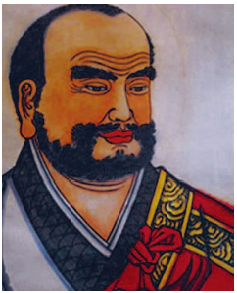KASHMIRA VALE OF WISDOMTHE CROWN OF INDIA
| Date :23-Feb-2025 |

By PROF SHASHIBALA
Kashmir has been the cradle of wisdom, Indian
culture, a land of rishis, philosophers, historians,
scholars, monks, pilgrims, artists, rhetoricians
and story tellers. It is the crown of India not
only by virtue of its geographical location but
also by the crowning contributions in all the cultural fields like
literature and philosophy, performing and visual arts. Over the
centuries the state has nurtured
a distinct culture where people
belong to diverse social and
religious practices- Hindu,
Buddhist and later on after invasions, Islamic. Hindu-Buddhist
traditions have a history of more
than two thousand years and
Islam came in 13th century.
Kashmir had ushered into a
glorious period by 7th-8th century when it reached the culmination of arts and architecture.
The pious kings like Lalitaditya
and Avantivarma built Hindu
and Buddhist temples, chaityas
and monasteries. As devotees of
Shiva and Vishnu they built the
Sun temple- Martanda,
Shankaracharya temple and
many more dedicated to Shiva
and Vishnu that became
renowned places of pilgrimage
later on. The best history ever
written in India is by Kalhana, a
Kashmiri poet and son of maha
amatya Champak Prabhu. He is
remembered over the past centuries for his chronological
work- Rajatarangini. The history of Kashmiri language
goes back to the Vedic times. The script used in Kashmir
for writing manuscripts and all kinds of the most important
Sanskrit texts and documents is Sharada that came into
use from 7th-8th century AD onwards. The earliest manuscript of Ramayana is in Sharda script, preserved at the
Bhandarkar Oriental Research Institute in Pune.
It is said that Kashmir was a huge lake, and its water
was taken out by Balarama.
The etymology of the word
Kashmir is debated. Some people accept that it comes from
Kashyapa pura and mira. According to the Nilamata Purana
Kashmir was built by Kashyapa. The name simply comes
from the Sanskrit word Kashmira. Its derivatives are commonly found in Sanskrit literature and grammatical works
like kasmiri, kasmiraka and kasmira-mandala.
Kashmir played an important role in international trade
and dissemination of culture by virtue of its location. Major
trade routes connecting Eastern and Central Asia, and
Europe met there. It has been celebrated throughout Asia
as the vale of wisdom, adorned by galaxies of scholars,
and a land that humbles even Indra’s domain. Eminent
poets blessed by the grace of Sarasvati made Kashmir
envy of the Sanskritic world. The light of Buddhism and its
artistic glories, meditational enlightenment and enchanting
murals of the cloisters of Kashmir inspired artists to illumine monastic interiors in the kingdoms of Central Asia, in
the snows of Tibet and in the sprawling monasteries of
China.
Kashmir had a highly developed and flourishing tradition of painting and sculpting.
In the eleventh century
(A.D. 1052) Somendra the son of the polymath Ksemendra,
bemoaned the fading glories of Buddhist convents: “Gone
are the monasteries in the flow of time whose cloisters
were painted with charming murals of Buddhist avadanas
in golden hues and which held the eyes in rapture”.
These murals found a new life in Tibet.
Kashmir region has preserved the tradition of worshipping Kuldevis and Ishtadevis like Jwala, Sharika and Kheer
Bhawani, venerating the feminine aspect of nature.
The
great temples in Jammu are the Raghunath Mandir and the
Ranabireshvara Shiva Mandir as well as the famous
Vaishno Devi Shrine which attracts millions of devotees
every year.
Kashimiri bronzes are world famous for meticulous execution of finest details and intricate designs. In the field of
performing arts the only extant and complete commentary
on Natyashastra is by Abhinavagupta. A massive text of
music and dance- Sangeetaratnakara is by Sharngadeva.
Its 8th century paintings survive in Gilgit. The Amar
Mahal museum in Jammu displays a superb collection of
Pahari miniature paintings, as
does the Dogra Art Gallery.
Its craftsmen were long
famed in Central Asia and
Tibet. Rinchen-bzangpo, a
great teacher from Tibetan
called mahaguru, came from
Tibet thrice to obtain services
of Kashmiri craftsmen, sculptors, painters and even scholars to build 108 temples.
Kashmiri scholars travelled
to the farthest geographical
limits to spread dharma like
Dharmaraksh, Sanghadeva
and Buddha Bhadra.
The
father of Kumarajiva who is
still highly respected in
China and Japan was a
Kashmiri Brahmana. Acharya
Chintamani was a Kshatriya
who travelled to then-capital
of China Loyang. He dedicated the whole of his life and
passed away there in the
eighth century. Apart from
translating he built a
monastery also. They carried a number of Sanskrit texts
with them to China via Central Asia. The Buddhist masters
from Kashmir worked together with the Chinese to translate philosophical texts from Sanskrit to
Chinese. They paved a path towards development of
various Buddhist sects.
There are many references about
diplomatic relations between India and China sending letters, messages and gifts etc. The impact of the knowledge
of Acharya Praajna is traced upto Japan.
Kashmiris hold a place of prestige because of the knowledge and the talent that was sought after by many countries. Wherever there are collections of sacred statues and
paintings in the museums in the world, there are bronzes
and other artifacts from Kashmir. Even the Palace Museum
in Beijing holds such invaluable treasures.
Kashmir spread the knowledge of Logic, Yoga and Dhyan
abroad. Its geographical data is furnished by Chinese historical chronicles. The Mongols during their rule in Iran
invited Buddhist monks from Kashmir. Kashmir still has a
place of honour among the Mongols.
The contribution of Kashmir in developing and spreading
Indian culture is enormous. It requires further studies and
dissemination of the information about its glorious history
and heritage.
(The author is Dean,
Bhavan’s Nandlal Nuwal Centre of Indology) ■



